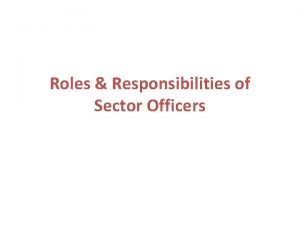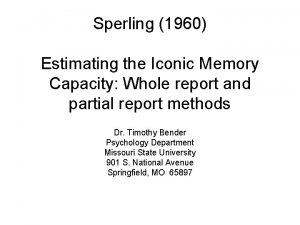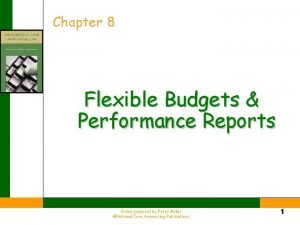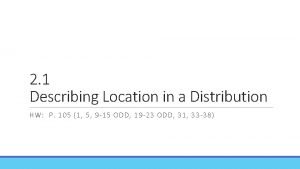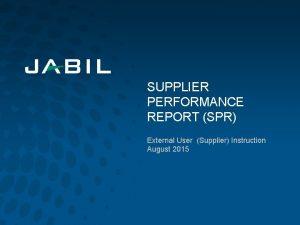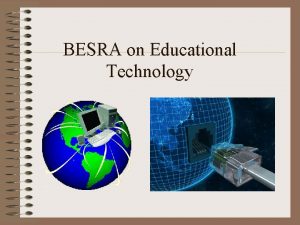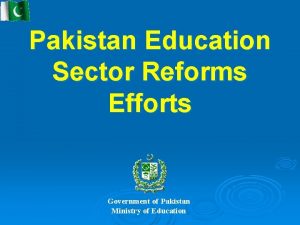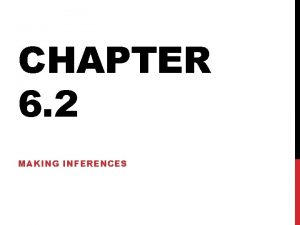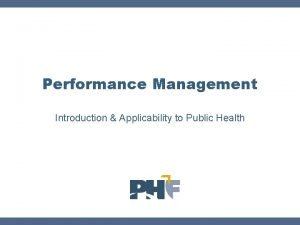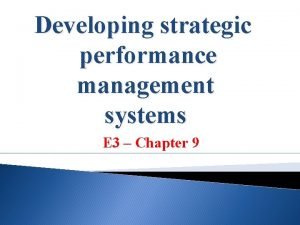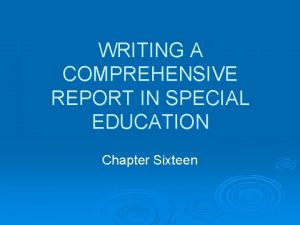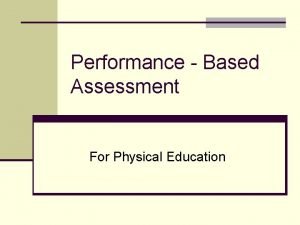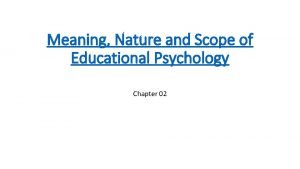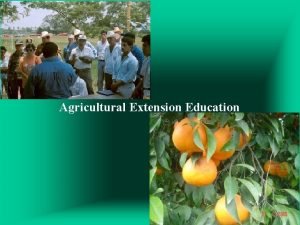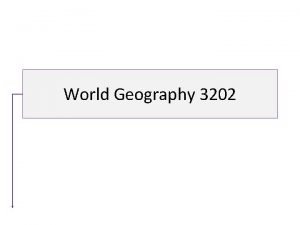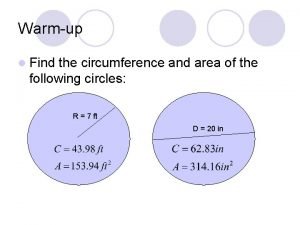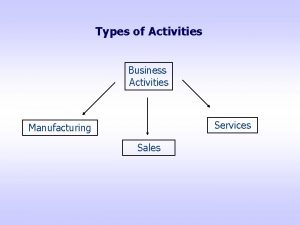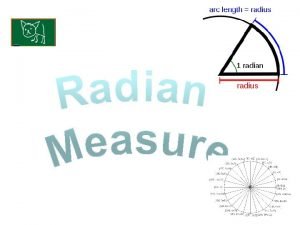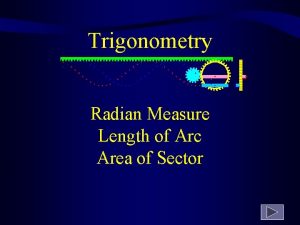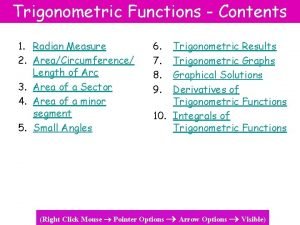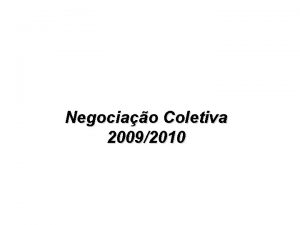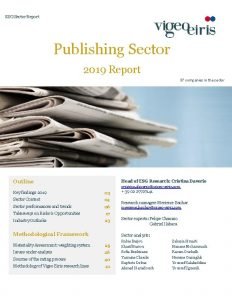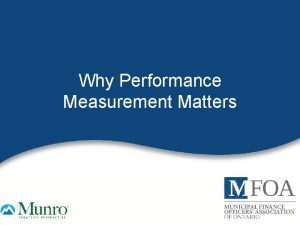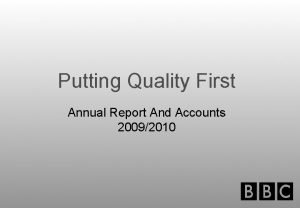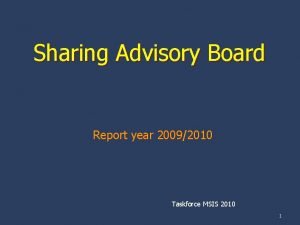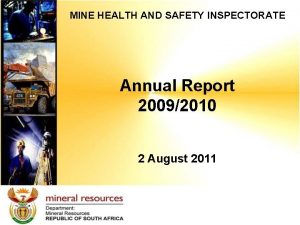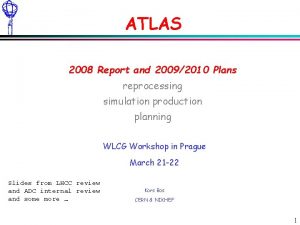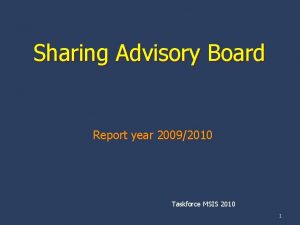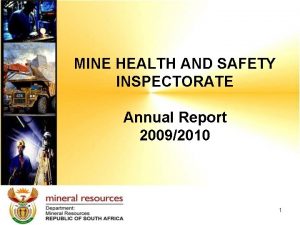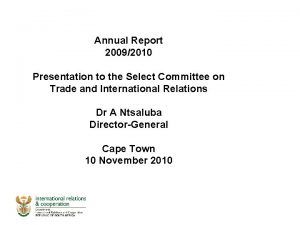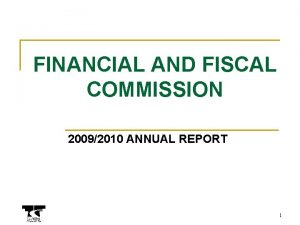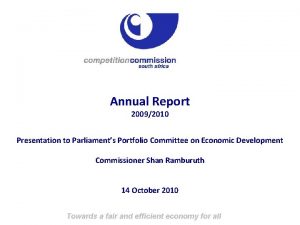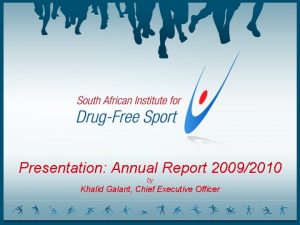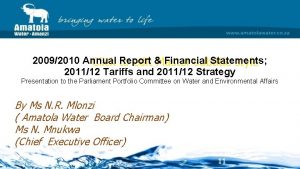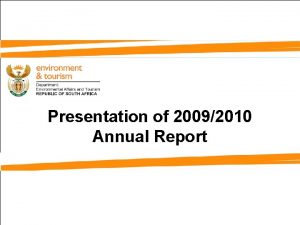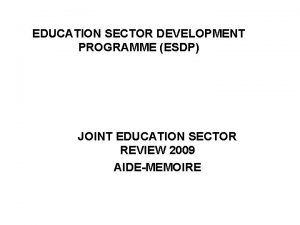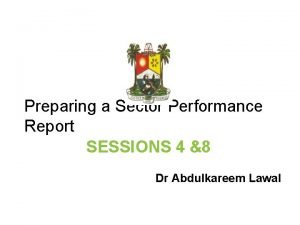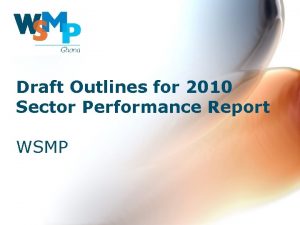Education Sector Performance Report 20092010 Why Education Sector















































- Slides: 47

Education Sector Performance Report 2009/2010

Why Education Sector Review? �It is a diagnosis of the education sector as a whole that cuts from ECD to Higher Education including lifelong learning and TVET; �It helps to identify strengths and weaknesses of the education system in organization, financing and performances; �It identify constraints and leeway in development of the sector and identify key policy options; �It is a communication and dialogue tool that promotes ownership, consensus and sector dialogue; and �It is a participatory process requiring political involvement.

Methodology The Education Sector Performance Report 2009/10 have been derived from: �Field visits conducted in 11 councils; �Focused group discussions; �Various sub sector quarterly and semi annual performance reports.

Structure of Presentation �Mandates and responsibilities �Overall priorities for 2009/11 �Overall Progress �Summary of performance by Sub-sector �Cross-cutting issues �Financial Performance �Administration and Human Resources

Mandates and Responsibilities �Ministry of Education and Vocational Training education policy formulation, regulations and guidelines, setting standards, quality control and assurance � Prime Minister’s Office Regional Administration and Local Government (PMORALG) oversees the supervision, administration and management of Pre-Primary, Adult and Non-Formal and Secondary Education performed by Local Government Authorities (LGAs). �Ministry of Community Development, Gender and Children is responsible for policy formulation, inspection, curriculum development, monitoring and evaluation of Folk Education

Overall Sector Priorities for 2009/10 �Improved supply of qualified teachers �Improved quality of education �More books and teaching learning materials �More and better infrastructure �Better information and reporting �Strengthened education planning and budgeting �Strengthened Inspectorate �Addressing of Cross-cutting issues �Addressing vulnerability �Expanding Enrolment �Strengthened Research and Development

Overall Education Sector Performance Demographics We are facing severe pressure based on demographics – requiring over 150% more places in pre-primary, 5. 6% more places in lower secondary and 425% more places in upper secondary if we are to reach the MKUKUTA targets; Increased in the number of orphans as a result of HIV and AIDS; Enrolment increased at every level except primary Equity Gender parity worsens with progress up the educational ladder – I will focus more on this later in my presentation Internal Efficiency Generally improving across the sub-sectors –with reduced drop out rates and improving pupil teacher ratios Quality This is an issue which requires on-going attention, in each of the individual sub-sectors, and particularly in terms of teacher morale in hard to reach areas

Overall Education Sector challenges Providing incentive packages for teachers in difficult and hard to reach areas; Management of rapid expansion of enrolment; Setting realistic targets; Facilitating research and development; Developing capacity in governance, management, M&E and CCIs; Sufficient financing the programmes and strategies; Improvement in teaching of science, mathematics and languages subjects.

Overall Sector Achievement of Targets �Pre-primary : 1 out of 2 targets achieved �Primary : 9 out of 14 targets achieved �Secondary : 3 out of 11 targets achieved �Teacher Education: 3 out of 4 targets upward trend �Adult Education : both indicators downward trend �Voc’l Ed and Training : 3 out of 4 indicators upward �Tech Ed and Training: 1 of 2 indicators upward �Higher Education: 4 indicators, all upward �Folk Education: 1 indicator - upward Table 1, Pg 41 shows details and Table 2; Pg 47 shows what mitigation actions are planned.

Sub-sector Priorities and Achievements

Pre-Primary – Prioritized Actions �Develop Early Childhood Development (ECD) Policy and Management Guidelines �Promote ECD through community sensitization �Implement the Joint Integrated ECD Service Delivery Initiative in 9 councils �Orient REOs and DEOs on ECD guidelines �Increasing enrolment �Support community efforts in construction of preprimary classrooms.

Pre-Primary Achievements Comments 3. 3% Increase in enrolment – over 925, 000 children, but NER only reached 37. 5% - not the target of 50% Draft ECD policy prepared and submitted to Cabinet for approval ECD Management Guideline Operationalised Joint ECD Initiative started Lack of proper census Inadequate sensitisation of communities; indirect costs may put them off Some under-age children enrolled in Std 1 Schools not ‘friendly’ for young children with disabilities

Primary – Prioritised Actions Construction of teachers houses – in collaboration with LGAs Purchase teaching learning materials Monitor expenditure of capitation and develt grants Increasing enrolment Build new classrooms and Rehabilitate existing classrooms Construct pit latrines, with adequate facilities for girl pupils Replace furniture for teachers and pupils as required.

Primary – Achievements In F/Y 2009/10: � 293 Teachers’ houses and 510 classrooms were constructed; � 117 Pit latrines were constructed; �The enrolment of children with disabilities increased from 27, 422 in 2009, of whom, 14, 663 to 29, 287 in 2010; �Tsh. 39, 893, 815, 800 was disbursed from Treasury to the LGAs. The LGAs disbursed the same amount to schools for purchasing of textbooks, other teaching and learning materials, school rehabilitation, internal examination and administration;

Primary – Challenges �Only about half of budgeted Capitation grant disbursed from Treasury to LGAs; �Pupil/Book remained high 1: 5; �Falling PSLE pass rate; �Over planned target for new Std 1 enrolments; �Slight decrease in overall enrolment;

Secondary – Prioritized Actions �Evaluation of SEDP I and finalisation of SEDPII �Finalisation of decentralisation to LGAs �Improving teaching and learning of science and maths �Placement of new graduates and diploma holders in schools �Girls science camp �Further institutionalising TUSEME �Monitoring Secondary provision in councils

Secondary – Achievements In 2009/10: �SEDP II documents and corresponding guidelines were finalised; �Capacity building for key officers – Council Education Officers, Planning officers, council treasurers and council procurement officers were provided; �Overall increased enrolment – NER and GER; getting closer to gender parity �Equity – building of hostels by communities and support to poorer households by NGOs and CBOs; science fairs promote girls engagement in science �TUSEME programme was institutionalized into 300 schools by training 600 teachers and conducting TUSEME festival for 800 students from schools that had already mainstreamed TUSEME.

Secondary- Challenges �Transition from primary to secondary decreased from 51. 6% to 43. 9% ; �Decrease in pass rate of CSEE to 72. 5% in 2009 from 83. 6% in 2008 while in ACSEE it was 93. 8% in 2010 from 94. 4% in 2009; �Providing appropriate and sufficient teaching and learning materials; �Mobilizing financial resources to ensure that SEDP Financing Gap is bridged,

Teacher Education – Prioritized Actions �Finalize INSET strategy �Provide Pre-service training �Upgrade 400 B/C teachers to grade A �Conduct INSET in science, maths and English �Procure special needs teaching/learning materials �Expand facilities at TTCs �Sustain provision of Information and Communication Technology in TTCs �Further training of teacher tutors

Teacher Education – Achievements In 2009/10: �INSET strategy that intends to enhance the capacity of primary school teachers was finalized; �Enrolments for Grade IIIA increased, �Gender Equity – achieved for IIIA, but 43% for Diploma �Review of curricula and teaching learning materials undertaken �ICT facilities enhanced, also capacity building for tutors �Research showed two tier Diploma system not satisfactory, so two year training re-introduced �Capacity development of tutors through OUT conducted

Teacher Education – Challenges �Down ward trend for Diploma enrolment; �Improving capacity of teachers colleges to meet increasing demands for teachers at all levels; �Improving the supply of adequate number of diploma teachers; �Improving capacity to provide INSET training to match with demands.

Inspectorate – Prioritized actions �Rehabilitate 20 Inspectorate offices �Carry out over 24, 500 Inspections �Train 15 o new inspectors �Supervise form 2 examinations �Book allowances for inspectors studying at OUT �Training of Pilot on School Supervision Guidelines, Inspector’s Handbook and Whole School Checklist �Follow-up of implementation of inspection targets �Procure 27 vehicles

Inspectorate – Achievements � 20 district offices were rehabilitating and furnished; �Almost all planned activities carried out; �Nearly 1000 inspections carried out, but this only 50% of target; �procurement 27 vehicles were procured and distributed to needy zones �Upgrading of Inspectors through OUT; �School based seminars conducted to help teachers; �Form 2 Exams carried out; 65. 3% pass rate �Monitoring in Dar es Salaam region was conducted and showed many institutions offering education illegally in unsuitable premises; �Financial constraints 61. 4% of budget disbursed

Inspectorate – Challenges �Timely dissemination of inspection reports to all stakeholders by making use of ICT facilities; �ensuring that all inspectorate offices are adequate and resourced with furniture and reliable transport to access hard to reach areas throughout the year; �ensuring that there adequate number of qualified schools inspectors as per establishment.

Adult and Non-Formal Education Planned Activities �Monitor implementation of Lifelong Learning Management Information Systems in 12 pilot districts �ICBAE and COBET rolled out Achievements �Increase in ICBAE enrolment, linked to SACCOS �On-going work to improve quality �Insufficient funds available for the ‘Yes I Can’ Programme

Adult and Non-Formal Education. Challenges �Inadequate budget funding of AE/NFE at all levels, thus affecting efforts to reduce illiteracy rate in the country; �Inadequate teaching and learning materials and poor learning environment at COBET centers; �The low and irregular payments of honoraria to the classroom facilitators by councils; �Lack of AE/NFE coordination and monitoring linkage at the regional level. �Lack of regular surveys to assess progress with literacy across the country

Higher Education – Prioritized actions �Financial support to 14 Higher Education Institutions �Sponsorship of medical doctors �Provision of higher education loans to 60, 000 students �Sponsor 90 exchange programme students (East Africa) �Sponsor 5 students from China �Coordinate utilization of 150 scholarships overseas �Sponsor 80 academicians �Provide financial support for basic and applied research

Higher Education – Achievements �Continued expansion of private higher education provision; �Range of courses offered also at higher education expanded; �Almost 119, 000 students now enrolled; �Almost 75, 000 students given loans; �First phase of construction of UDOM completed; �Female participation in higher education reached 35. 2%; �TCU continues to regulate quality; �TCU established coordinated Central Admissions System; �Draft National Qualification Framework (NQF) finalised; �On-going research as part of Universities work

Higher Education – Challenges �Inadequate number of teaching and technical staff compared to the increased number of students and new higher learning institutions; �The increasing number of aging and retiring skilled academic staff not matched by effective succession plans; �Limited resources to meet the increasing number of needy students demanding loans; �Institutionalizing of alternative modes/means of financing higher education.

TVET – prioritized actions �Strengthen data gathering through MIS; �Sponsor ordinary diploma in engineering students; �Rehabilitate VET centres and begin construction of 25 new ones; �Preparation of Technical and Vocational Education and Training Development Programme �Facilitate Regional Vocational Training Services Centres to provide diploma programmes �Needs assessment on existing VET centres conducted �Develop a bridging programme to enable VETA graduates train as Technicians �Expand infrastructure to cope with increased enrolment

Vocational Ed – Achievements �VET-MIS established �Construction and Rehabilitation work carried out to continue to expand access �Enrolment increased – nearly 117, 000 �Gender equity not achieved though enrolment above 45% �Pass rate generally good – over 76% in past few years �Investment in modern equipment and tools

Vocational Ed – Challenges �Drop out rate remains high; �Mobilizing adequate resources to facilitate rehabilitation and expansion of facilities in the existing VTCs and establishment of 28 district vocational centres; �Establishing a clear mechanism to capture and report on allocation and expenditure of VTCs managed by LGAs;

Technical Education and Training – Achievements �Higher Education/ Technical Education MIS established �Focus on registration of institutions – 223 registered �Over 50, 000 students enrolled - a 2% increase �Apparent decrease in female enrolment � 28 Institutions inspected and 18 fully accredited, 8 given preparatory status and 2 directed to improve. A total of 79 institutions now accredited to offer competence-based programmes �Teacher Student ratios are acceptable to respective subject Boards

Folk Education – Prioritized Actions �Facilitate residential, short and outreach training for 30, 000 participants �Train/upgrade FDC staff �Rehabilitate and improve infrastructure in 15 FDCs �Improve ICT in 30 FDCs �Facilitate training on CCIs �Develop Folk/VET Management Information Sytesm �Equip 53 FDCs with teaching learning materials and transport facilities

Folk Education – Achievements �Enrolment exceeded target – over 31, 000 students �Major rehabilitation of 21 FDCs and minor rehabilitation of 11 FDCs �Curriculum review undertaken �Staff upgrading eg in appropriate technology �Financial disbursements only 71% for recurrent expenditure and 44% for development activities �Research established that FDCs can provide vocational education if adequately resourced

Folk Education – Challenges �Availability of adequate and timely disbursement of recurrent and development funds; �Effective implementation of Folk Education Development programme activities.

Cross Cutting issues 1 Gender HIV and AIDS Planned – guidelines for reentry of pregnant school girls, and gender Strategic plan Achieved – guidelines incorporated into draft of new ETP; training of focal points in Mo. EVT departments; research carried out on school girl pregnancies in Kilimanjaro and Mtwara Planned – finalize HIV&AIDS strategic plan; develop care and support strategy; develop national life skills framework Achieved – support for work place interventions

Cross Cutting Issues 2 Environmental Education Human Rights Education Planned: teacher training on environmental ed, and sustainable dev; prepare climate change adaptation training manual and materials, and orient teachers; environmental education strategic plan Achieved: Training for 50 teachers and 10 Inspectors; collaboration with other ministries Planned: Strategic Plan on Human Rights Education Achieved: Draft Strategic plan 2010/11 to 2014/15; work is under Adult Education and funding insufficient though some work with stakeholders in primary schools, National Literacy Centre in Mwanza;

Cross Cutting Issues 3 ESMIS Planned: BEST 2010; capacity development of sub-sector focal persons; centralization of subsectors database; M&E in pilot districts; updating MOEVT website Achieved: Only 28 councils have decentralised EMIS database; Folk/VET MIS developed and tested; Higher and Technical MIS was developed and tested; data quality improved; all subsector data bases harmonised and centrally supervised by EMIS IEC Planned: TV and radio programmes; Ed. SDP newsletter; Develop Mo. EVT Communication Strategy Achieved: Multi-media strategy in place focussing on strategic messages for specified audiences; equity messages about gender and vulnerability are included – insufficient budget for radio and TV

Financial Performance

Trends of Budgetary Funding of Education Sector by Level in Millions 2007/08 2008/09 Revised 2008/09 2009/10 2010/11 Primary Education 544, 220 638, 035 666, 419 830, 702 968, 729 Secondary Education 174, 227 133, 058 140, 196 197, 483 414, 704 Vocational Training 18, 978 8, 007 8, 370 8, 692 Other Basic Education 49, 661 69, 630 829 983 3, 132 5, 386 5, 133 10, 043 790, 219 854, 116 957, 438 1, 152, 902 1, 498, 313 University Education 264, 343 335, 635 335, 746 413, 771 525, 464 Technical Education 14, 289 14, 796 16, 888 17, 309 Other Higher Education 38, 586 69, 342 317, 218 419, 773 472, 934 Sub sector Basic and Folk Education Folk Development Sub-Total Basic and Folk Education Higher Education Sub-Total Higher Education Development Fund to Local Govt 493, 462 697, 646 97, 516 TOTAL EDUCATION BUDGET 1, 107, 437 1, 273, 889 1, 430, 372 TOTAL NATIONAL BUDGET 6, 066, 800 7, 215, 631 9, 513, 685 11, 609, 557 18. 3% 17. 7% Education as a % of National Budget 19. 8% 1, 743, 880 18. 3% 2, 195, 960 18. 9%

Financial Performance • During the financial year 2009/10, the three ministries had a budget of Tsh 1579, 280 mil equivalent to 90. 6% of the education sector budget. The remaining share of 6. 4% went to other Ministries which are not included in this analysis. In 2010/11, the three ministries had a budget of Tsh 2, 036, 682 million equivalent to 92. 7% % of the education sector budget. • The percentage of the national budget allocated to the education sector has been fluctuating from one year to another, showing up and downward trend as indicated on Table 20. The fluctuating trend makes it difficult to plan for the achievement of the Education Sector Programmes, MKUKUTA targets, MDGs and EFA goals. In addition, the total amount allocated to the education sector in recent years has not been sufficient to carry out plans to achieve these goals. This insufficient funding calls for increase in the share of the education sector allocations of the total national budget.

Trends of Budget Allocation by Sub-sector. Primary Education Secondary Education Vocational Training Teacher Education - Mo. EVT Administration Folk Development University Education Technical Education Other Tertiary UNESCO Commission - Mo. HEST Science & Technology - Mo. HEST Administration – Mo. HEST Percent of Total Govt. Budget 2006/07 2007/08 2008/09 2009/10 2010/11 47. 6% 44. 1% 46. 6% 53. 9% 49. 1% 11. 3% 18. 9% 9. 8% 13. 2% 15. 7% 0. 5% 0. 4% 0. 6% 1. 2% 1. 7% 2. 7% 1. 3% 1. 8% 1. 1% 1. 7% 2. 2% 1. 8% 1. 9% 5. 0% 2. 7% 0. 3% 0. 5% 0. 4% 0. 3% 23. 7% 23. 9% 23. 5% 19. 9% 23. 9% 1. 0% 0. 8% 1. 0% 1. 6% 1. 3% 3. 6% 7. 1% 3. 7% 2. 4% 2. 6% % % 0. 0% % % 0. 6% 0. 5% % % 0. 8% 0. 3% 18. 8% 18. 3% 19. 8% 18. 3% Source: Mo. FEA budget speech Education, Sectors budgets books and LGA –SBAS

Financial Performance – Challenges • The key challenge for financial management within the sector is untimely release of fund as per action plan. There is a minimum flow of funds during the first quarter of the year and more flow of funds during the last quarter. This means delay of implementation of some activities or even means forgoing of other activities

Administration and Human Resources �TORs for a Human Resource Situational Analysis have been agreed �Nearly 18, 000 teaching staff were employed �The client service charter is under review �New organization structure is underway to address devolution of secondary education �New schemes of service for staff such as teacher college tutors are under preparation �A Teachers Professional Board will be established to address matters of teacher recruitment and remuneration �Coordination continues to take place within and between institutional structures of PMO-RALG, POPSM, MCDGC, MOFEA and MOEVT.

Conclusions and Way Forward �Improvement of basic education �Addressing geographic inequalities in allocation of resources �Expanding access and enrolment in Higher, Technical and Vocational Education �Strengthening science and technology education at all levels �Strengthening sector-wide planning, management, monitoring and evaluation. �Rehabilitation of aging and dilapidated infrastructure and the construction of new infrastructure to accommodate the increasing number of students. �Establishment of an alternative sources of financing higher education students loans; � Maximizing the use of ICT in teaching and learning process at all level of education.

Thank you for your attention
 1−20092010=1−20092010=
1−20092010=1−20092010= Pictures
Pictures Dont ask
Dont ask Sector officer duties and responsibilities
Sector officer duties and responsibilities Writing a status report
Writing a status report Sperling 1960
Sperling 1960 Adsb performance report
Adsb performance report Flexible budget performance report
Flexible budget performance report Mark receives a score report detailing his performance
Mark receives a score report detailing his performance Supplier performance report excel
Supplier performance report excel To create a meaningful performance report
To create a meaningful performance report Bars rating scale
Bars rating scale Behaviorally anchored rating scale
Behaviorally anchored rating scale Jcids manual
Jcids manual Human resources in education sector
Human resources in education sector Five besra
Five besra Education sector reforms in pakistan
Education sector reforms in pakistan Why does kyle put the report card in a soup can
Why does kyle put the report card in a soup can Performance management activities
Performance management activities Why is performance management important?
Why is performance management important? Most fad diets do follow the mypyramid guidelines.
Most fad diets do follow the mypyramid guidelines. Parts of comprehensive report
Parts of comprehensive report Prof yashpal committee
Prof yashpal committee Higher education achievement report
Higher education achievement report Annual status of education report
Annual status of education report Types of performance-based assessment
Types of performance-based assessment Performance standards examples education
Performance standards examples education Why-why analysis
Why-why analysis Wh tongue twister
Wh tongue twister Does this table represent a function why or why not
Does this table represent a function why or why not What does the image represent
What does the image represent Why or why not
Why or why not Contoh laporan root cause analysis
Contoh laporan root cause analysis Why is health education important
Why is health education important Discuss the meaning of educational psychology
Discuss the meaning of educational psychology Importance of water
Importance of water Difference between education and literacy
Difference between education and literacy Differences between health education and physical education
Differences between health education and physical education Extension education is non formal education
Extension education is non formal education Secondary world geography definition
Secondary world geography definition Gender empowerment measure
Gender empowerment measure Calculate sector area
Calculate sector area Burgess model of land use
Burgess model of land use Understanding business management
Understanding business management Types of activities in business
Types of activities in business Worked out
Worked out Area of sector radians
Area of sector radians Area of a sector
Area of a sector



